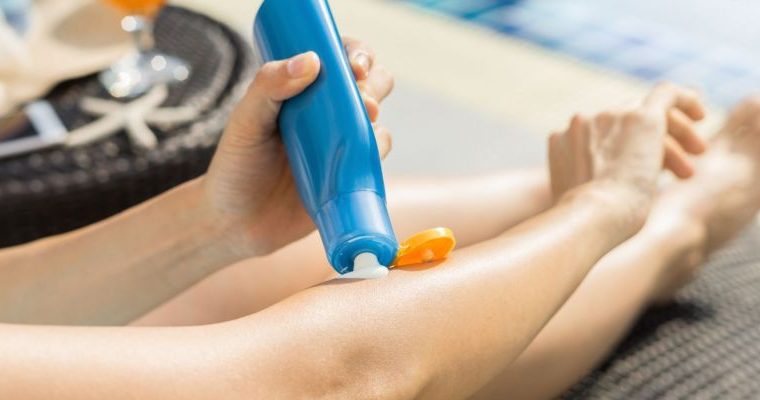1.Tanning Ages Your Skin Fast
It is no secret that tanning, whether in a tanning in a salon, or out in the natural sun, will cause your skin to age faster. The strong rays cause wrinkles, moles, and spots that can make for an older look before your time. Tanning causes the layers of your skin to age at a much quicker pace than they normally would with everyday outdoor exposure to the sun from simple activities like sports, or taking a walk around the block. If you want to look older fast, skin tanning will get you there.
2.Bronze is Attractive
Tanning did not used to be popular in fact only paupers had tans in medieval days and queens were admired for their stark white skin. That trend has taken a distinct turn and has also turned into big business. Tanning to attain that bronze color is now highly propagated by models on the runway, billboards, and marketing campaigns for young and old. Beach and resort promos are littered with tanned couples strolling the shore hand in hand. People now find a bronzed body much more attractive than a white complexion.
3.Outdoor Tanning is Healthier than Tanning Beds
Getting a natural tan from the sun’s rays is considered to be the healthier version of tanning. The sun’s rays are not as harmful as the synthetic rays that are produced from the bulbs in a tanning bed. It’s still important to be extremely cautious not to overdo it in the natural sunlight either. You run the risk of getting sunburnt, sun allergies, and sun poisoning. Overdoing in a tanning bed can lead to the same results but with even more severe consequences. Not to mention the risk of bacterial infections due to poorly cleaned booths at the salons. It is important to note that you should always make sure that your tanning bed is cleaned properly before you hop in. Better yet, avoid the risk of infections and spreading germs, and get outdoors for a natural bronzed look. Just be mindful of your time of exposure and use sunblock if you deem necessary.
4.41 states Restrict Tanning for Minors
It is a little known fact that 41 states in the USA restrict tanning for minors, or those under the age of 18. This is enforced to ensure that youths are not exposing themselves to the unnecessary health risks posed by tanning such as skin cancer, sun poisoning, sun allergies, and the like. Salons are under strict guidelines to check driver licenses and ID’s to ensure that patrons are not underage. Failure to do so could result in fines and closure of business.
5.Out of the 28 million people who tan indoors, 2.3 million are teens
Skin tanning tends to draw the younger generation into tanning salons more than any other age group. 2.3 million teens, give or take, are visiting tanning salons to achieve their desired bronzed look. Teenagers are not the only ones though, with elderly visiting tanning salons to achieve the same look. Many do so before vacations to ensure they are not a ghostly pale tone when they hit their destination beach resort.
6.Tanning Risks Affect all Skin Types
It doesn’t matter what type of skin or skin color you may have, the risks of tanning affect everyone. In fact, damage starts with your first tan. Tanning causes premature aging by inuring your skin’s DNA and could potentially lead to skin cancer. There are different types of skin cancers and contrary to popular belief, they should all be assessed promptly and taken very seriously.
7.Sunless Tanning is Best
Using bronzing lotions is a healthier and safer alternative to having UV rays directly hitting your skin. The pigmentation you get from a store-bought tanning lotion or bronzer can give you a desirable glow with all of the negative effects of skin tanning. It is best to buy lotions and bronzers with organic and sustainable ingredients and less is usually more. The longer the list of ingredients and chemicals that you cannot pronounce the less safe of an alternative. Stick to short lists and follow directions for use to avoid an orange glow.
- Peptides Can Potentially Darken Skin tone
A research peptide Melanotan 2 was originally developed in the 1980s, at the University of Arizona, after it was found that α-MSH caused darkening of the skin in rodents. Originally designed as a sunless tanning option, this peptide has been studied on mice and rats with such results. This tanning peptide is currently being researched further by professionally licensed researchers and has not reached a usable or viable human scale testing phase. However, the promising skin pigmentation results in the studies done on rats and mice do signify that the peptide may potentially be used to darken skin with further studies and research.
- Tanning Does NOT Help with SAD
SAD or otherwise known as Seasonal Affective Disorder has been thought to be cured or at the least lessened by the effects of tanning. Although an attractive trade-off, it simply is not true. UV light exposure from skin tanning will not help you feel better or boost your mood over time enough to rid you are SAD.
- Do Self-Exams if you Tan
If you do practice visiting a tanning salon, or tanning in the sun on the daily, make sure to give yourself skin checks. Examine your skin for any unusual spots that are rapidly spreading or darkening or seemed to have appeared out of nowhere. Visit your doctor or frequent your dermatologist to ensure that your skin is safe. These professionals can also help you learn more about skin safety.
















